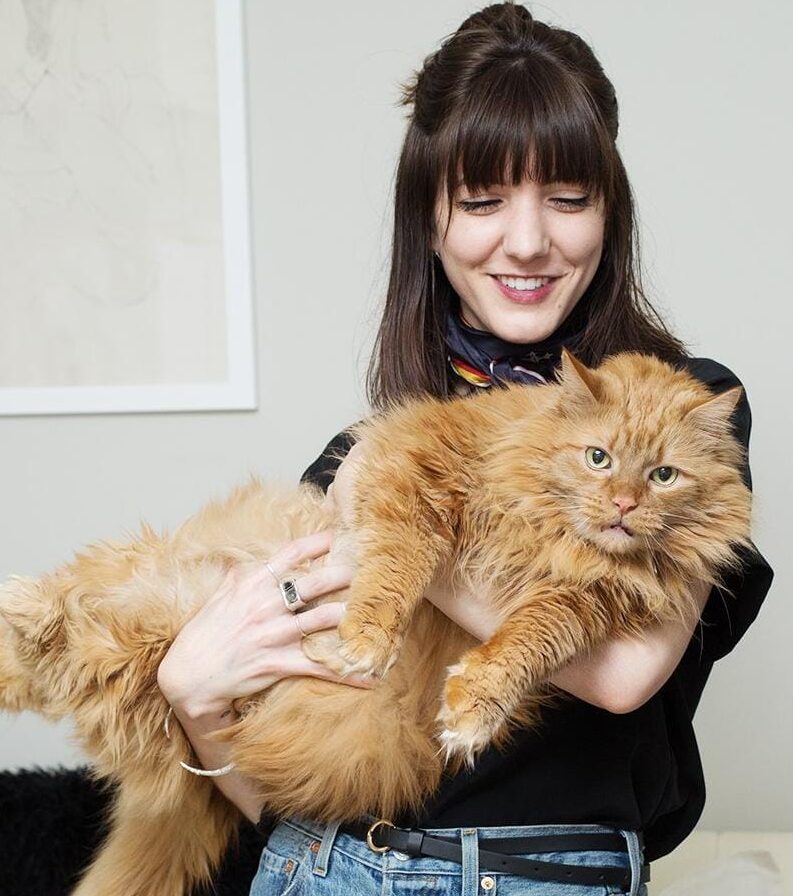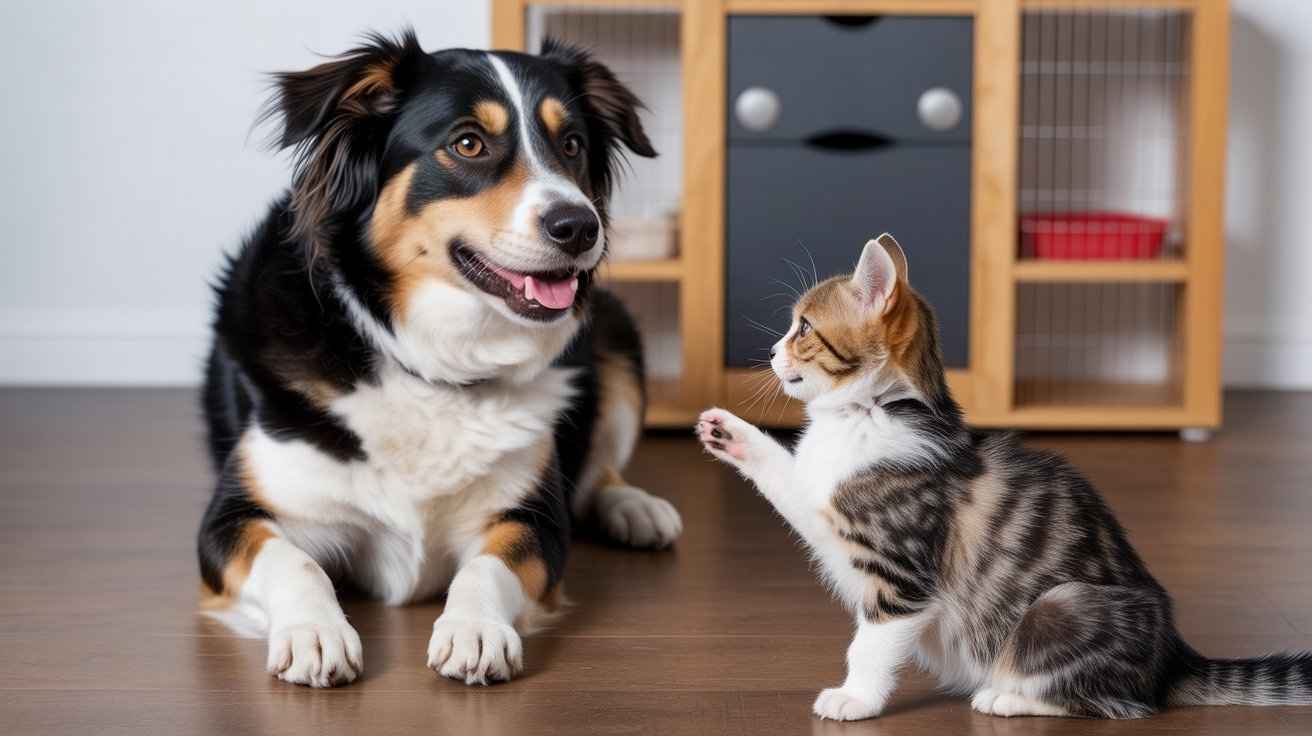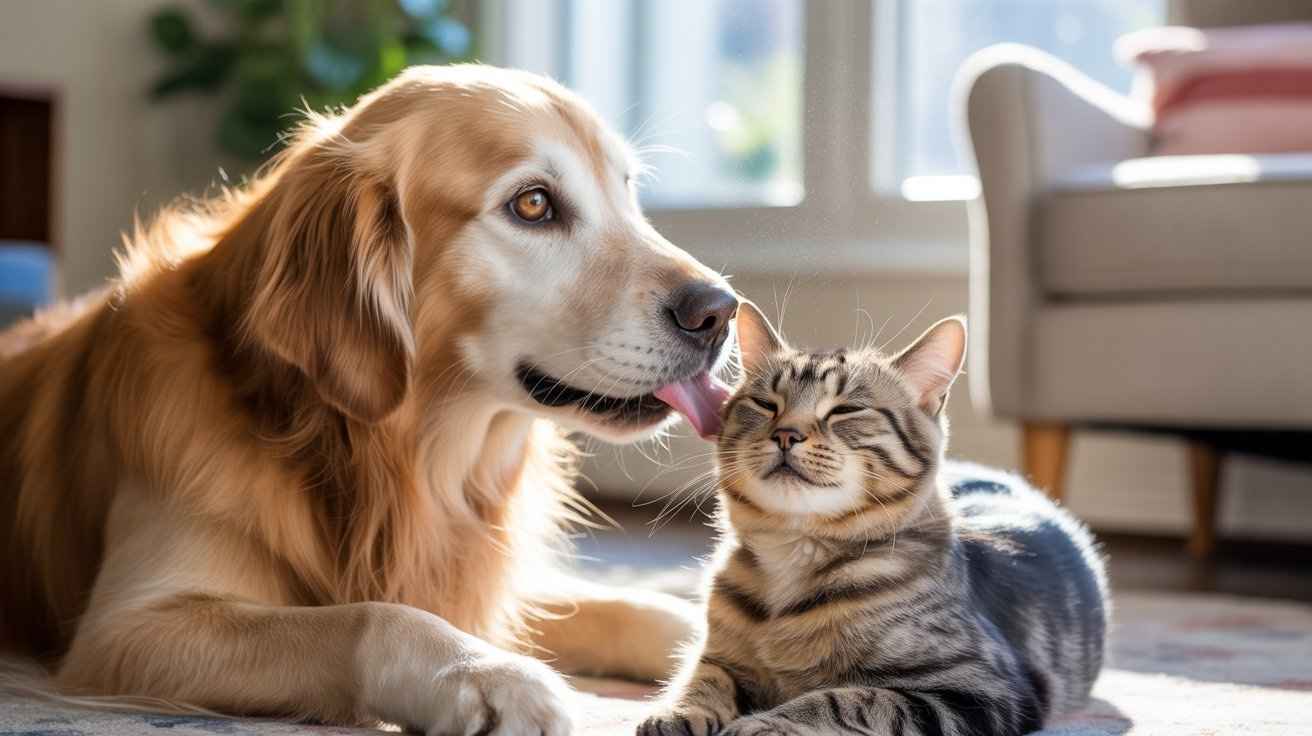Why Does My Dog Kill Cats? 5 reasons include prey drive, territorial instinct, lack of training, poor socialization, and fear aggression.
Why Does My Dog Kill Cats?
Witnessing your dog attack or chase a cat can be a frightening and confusing experience. Many owners ask, “Why does my dog kill cats?”
The answer often lies in a mix of instinct, territory, lack of socialization, or even medical issues. Some dogs view cats as prey, while others may act to defend their territory against them.
By understanding the causes, identifying warning signs, and utilizing proper training, you can help guide your dog toward calmer behavior and promote safe coexistence between pets.
Main Reasons Why Dogs Kill Cats
Not every dog that chases a cat is “bad.” Often, it’s instinct, environment, or health that drives aggression.
Quick Table: Main Reasons Dogs Kill Cats
| Reason | Explanation | What to Do |
|---|---|---|
| Predatory Instincts | Some dogs have a natural prey drive and may see cats as prey. | Provide recognition, socialization, and supervision. |
| Territorial Behavior | Dogs may see cats as intruders in their space. | Lack of Socialisation |
| Use slow introductions and reward calm behaviour. | Dogs not exposed to cats early may react with fear or aggression. | Stress or frustration is redirected toward the cat. |
| Redirected Aggression | Identify triggers and manage the environment. | Provide recognition, socialization, and supervision. |
| Medical Issues | Pain, illness, or discomfort can increase irritability. | Provide recognition and supervision. |
Recognizing Early Signs of Aggression
Before a dog attacks, it usually gives warning signs. Spotting them early can prevent harm.
- Body Language: StiVocalizationszationsackles, fixed staring.
- Vocalizations: Growling, barking, or whining when cats are near.
- Physical Actions: Lunging, chasing, or snapping—not playful signs.
- Other Signals: Pacing, restlessness, or unusual stress around cats.
How to Stop Your Dog from Killing Cats
Helping your dog live peacefully with cats requires training, socialization, and consistency.
- Training & Socialization: Start with leashed introductions. Reward calm behaviour.
- Supervision: Never leave dogs or cats alone until you have established a trusting relationship with them.
- Environmental Management: Use gates or separate spaces to avoid fights.
- Positive Reinforcement: Reward calmness instead of punishing aggression.
- Professional Help: If aggression persists, consider consulting a trainer or behaviourist. Rule out medical issues with a vet.
![A large black, brown, and white dog is lying on a wooden floor, looking towards a small tabby and white kitten sitting opposite it. The dog has its mouth slightly open in what appears to be a friendly expression. The kitten has one paw raised as if playing. In the background, there is a wooden cabinet with dark drawers. [Why Does My Dog Kill Cats?]](https://catscare.blog/wp-content/uploads/2025/09/dog-and-kitten-playing-indoors-1024x574.jpg)
7-Day Plan to Reduce Dog Aggression Toward Cats
| Day | Focus | Action |
|---|---|---|
| Day 1–2 | Burn Energy | Add longer walks and fun games to reduce pent-up energy. |
| Day 3–4 | Basic Commands | Let your dog see the cat from a safe distance, and reward calm behaviour. |
| Day 5–6 | Controlled Socialization | Let your dog see the cat from a safe distance, and reward calm behaviour. |
| Day 7 | Supervised Interaction | Allow short, supervised dog-cat play. Stop chasing or aggression quickly. |
Tip: Repeat this plan weekly. Over time, your dog will gain self-control, and your cat will feel safe and secure.
When to Seek Professional Help
Sometimes, aggression doesn’t go away on its own. Seek help if:
- Sudden Changes: Your dog exhibits sudden and intense aggression.
- Persistent Aggression: Training Doesn’t Improve Behaviour.
- Medical Concerns: Pain or illness may be the cause.
A trainer or vet can identify triggers, create behaviour plans, and ensure both pets are safe.
![A golden retriever is lying down on a tiled floor, nose-to-nose with a striped tabby cat that is sitting up. Both animals are looking at each other. In the blurry background, a framed print on a shelf reads "PEACEFUL COEXISTENCE" and a large window lets in natural light. [Why Does My Dog Kill Cats?]](https://catscare.blog/wp-content/uploads/2025/09/golden-retriever-and-cat-peaceful-coexistence-1024x574.jpg)
Promoting Harmony Between Dogs and Cats
Peaceful homes are possible with patience and training.
- Gradual Introductions: Use leashes or barriers at first.
- Supervised Interactions: Always watch until you trust both pets.
- Safe Spaces: Give your cat escape spots and quiet areas.
- Reward Calmness: Encourage and praise calm behaviour.
With consistency, dogs and cats can coexist peacefully—and even build friendships.
Final Takeaway
So, why does my dog kill cats? Most socialisation issues stem from a lack of socialisation, socialisation problems, or health issues. By spotting warning signs early, using training, and following a weekly plan, you can keep both pets safe. With patience, consistency, and sometimes professional guidance, dogs and cats can live together happily in the same home.
FAQ
Q1: Why does my dog chase or hurt my cat?
Dogs often exhibit behaviour driven by prey instinct or stress. Training helps them stay calm.
Q2: Can a dog and a cat live together safely?
Yes—if introduced slowly, supervised, and rewarded for calm behaviour.
Q3: How do I stop my dog from hurting my cat?
Use positive reinforcement, separation when necessary, and seek help if aggression persists.
Q4: Is it my dog’s fault for attacking the cat?
No. Dogs act from instinct, fear, or pain. Training and patience matter most.
Q5: When should I see a professional?
If aggression is constant, sudden, or accompanied by pain, contact a veterinarian or a qualified trainer.
Q6: Can aggression be caused by illness?
Yes. Pain or sickness can trigger aggression. Always get a vet check.

Hi, I’m Sana Sajid!I’m the voice behind CatsCare.blog, sharing my 10+ years of hands-on cat care experience. With a diploma in animal care, I offer practical tips, trusted advice, and easy-to-follow guides to help keep your cats healthy and happy.
When I’m not writing, I spend time with my own cats or exploring the latest developments in feline health. Follow CatsCare.blog for expert insights and real cat stories!


![A fluffy silver tabby cat with long fur is sprawled out and relaxing on a light-colored sofa, looking towards the camera. [Why Are Cats So Lazy?]](https://catscare.blog/wp-content/uploads/2025/09/why-are-cats-so-lazy.jpg)

![A realistic photo of a dog arching its back like a cat while stretching outdoors on green grass, captured in natural daylight. [Why Your Dog Arches His Back Like a Cat?]](https://catscare.blog/wp-content/uploads/2025/10/Why-Your-Dog-Arches-His-Back-Like-a-Cat.jpg)
